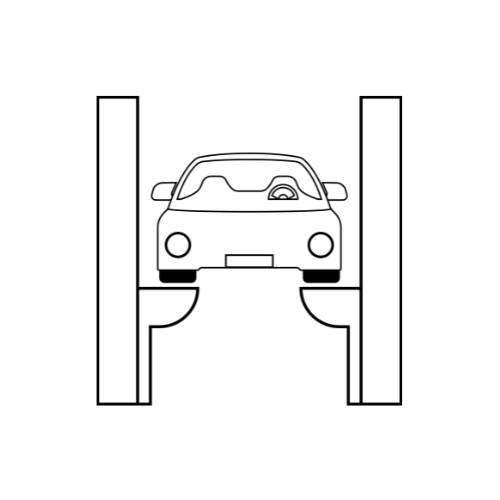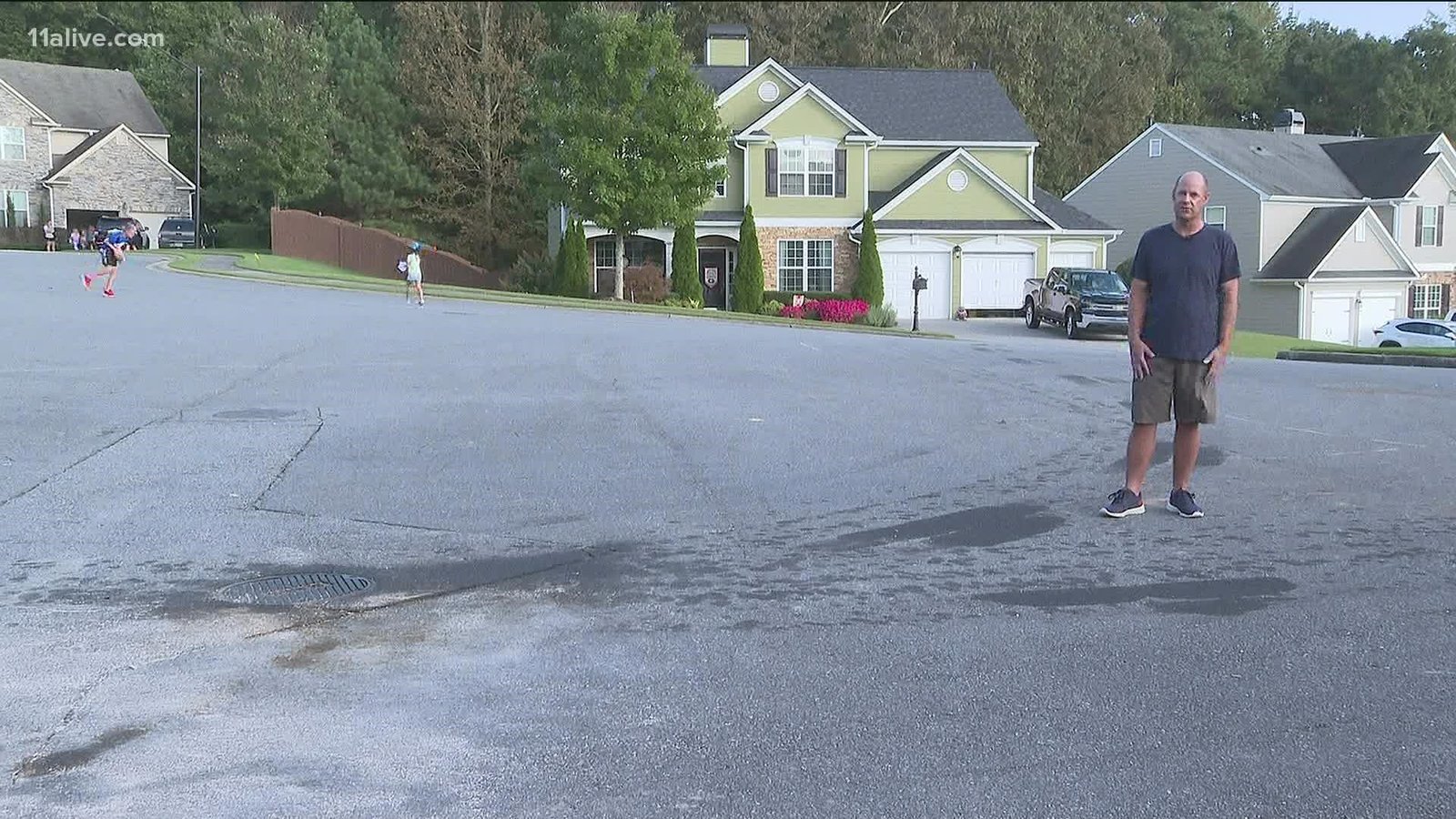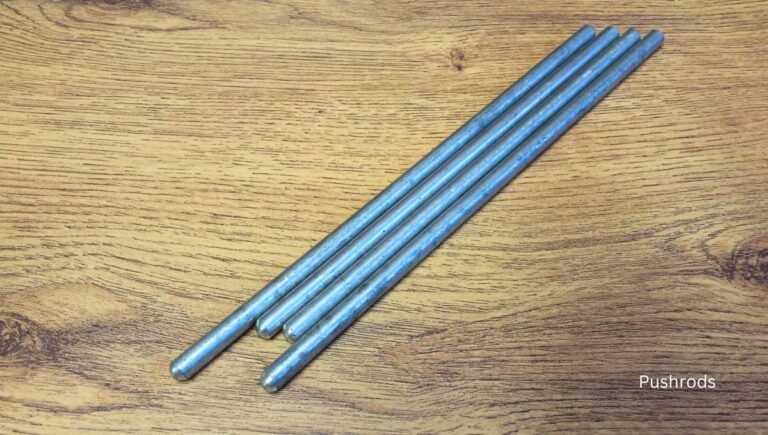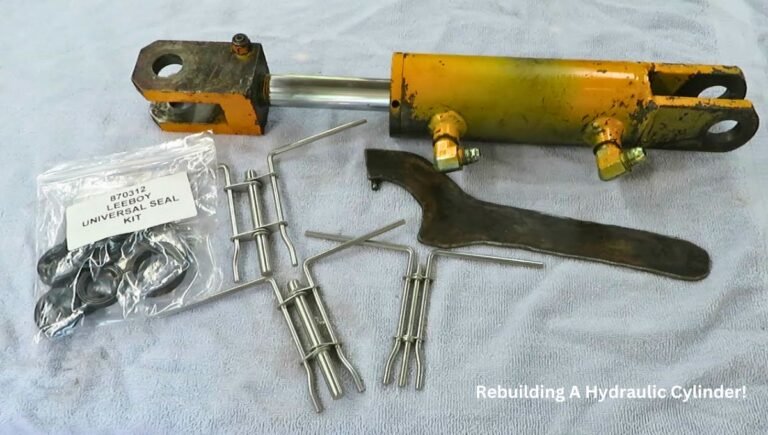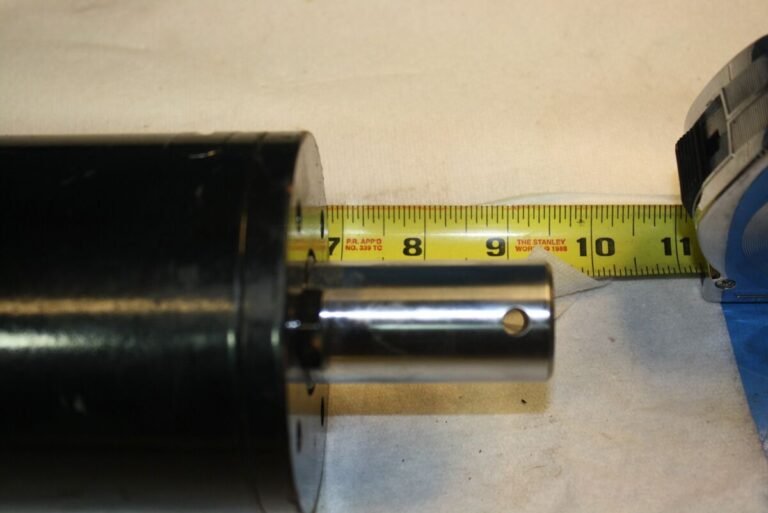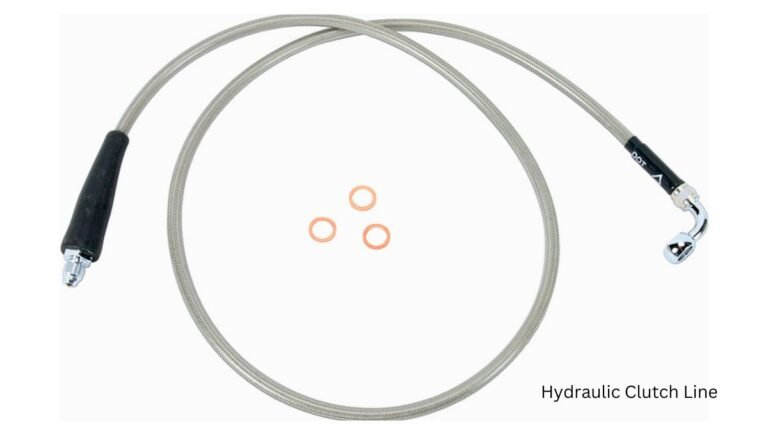How to Remove Hydraulic Fluid from Concrete? Quick Guide
To remove hydraulic fluid from concrete, use an absorbent material like cat litter, then scrub with a degreaser. Rinse thoroughly with water.
Hydraulic fluid spills on concrete can be unsightly and hazardous. Quick action is essential to prevent stains and maintain safety. Absorbent materials like cat litter or sawdust can soak up the fluid effectively. After removing the bulk of the spill, apply a commercial degreaser to break down the residue.
Scrub the area with a stiff brush to ensure thorough cleaning. Rinse the concrete with water to remove any remaining cleaner. For stubborn stains, multiple applications may be necessary. Properly addressing hydraulic fluid spills can extend the life of your concrete surfaces and keep them looking clean.
Introduction To Hydraulic Fluid Spills
Hydraulic fluid spills on concrete can be a big problem. These spills can happen suddenly and create a mess. Hydraulic fluid is used in many machines, like cars and heavy equipment. When these machines leak, fluid spills onto concrete surfaces.
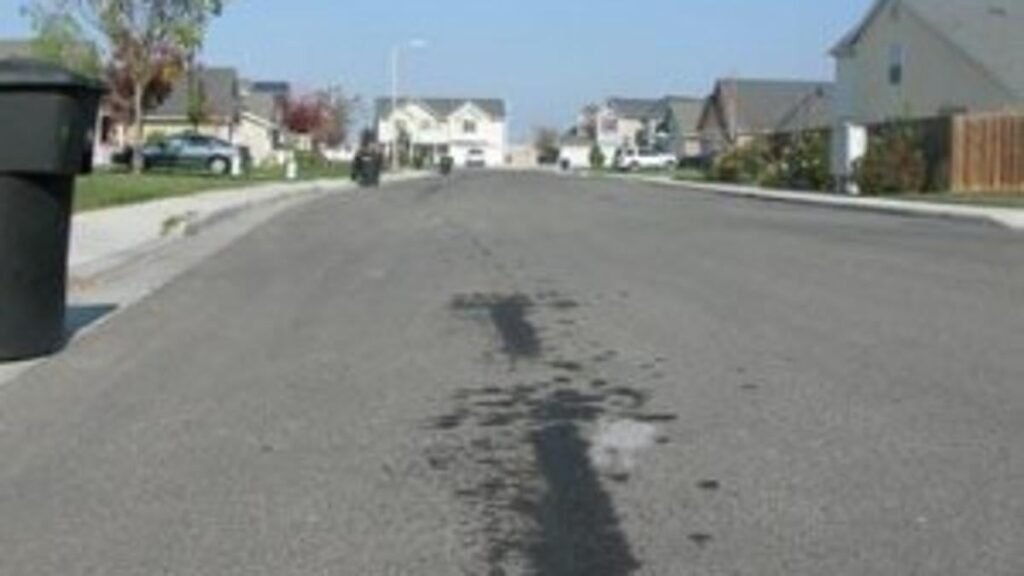
Removing hydraulic fluid from concrete is not easy. The fluid can seep into the surface, making it hard to clean. But don’t worry, we have some tips to help you handle these spills.
The Challenge With Hydraulic Fluid
Hydraulic fluid is oily and can penetrate concrete. This makes the cleaning process tough. The fluid can leave stains that are hard to remove. Concrete is porous, so the fluid can go deep into the surface. This makes it hard to fully clean the spill.
Immediate Actions Post-spill
Acting quickly is key to removing hydraulic fluid spills. Here are the steps to follow immediately after a spill:
- Contain the spill: Use absorbent materials to stop the spread of the fluid.
- Apply cat litter: Cover the spill with cat litter or a similar absorbent.
- Let it sit: Allow the absorbent to soak up the fluid for at least 30 minutes.
- Sweep it up: Remove the saturated litter and dispose of it properly.
These steps will help minimize the damage and make the final cleaning easier.
Safety First
Before starting the task of removing hydraulic fluid from concrete, prioritize safety. Handling chemicals and cleaning agents can pose risks. Proper safety measures prevent accidents and injuries.
Personal Protective Equipment
Wear the right personal protective equipment (PPE) to stay safe. Essential PPE includes:
- Gloves: Protect your hands from chemicals.
- Goggles: Shield your eyes from splashes.
- Long-sleeved clothing: Avoid skin contact with fluids.
- Respirator: Prevent inhaling harmful fumes.
Securing The Area
Ensure the work area is secure before cleaning. Follow these steps:
- Mark the area: Use cones or tape to mark the spill zone.
- Ventilate: Open windows or use fans for good air flow.
- Keep people away: Restrict access to the spill area.
- Remove obstacles: Clear the area of tripping hazards.
By following these safety steps, you can remove hydraulic fluid safely and effectively.
Initial Cleanup Steps
Removing hydraulic fluid from concrete can be challenging. The first steps are crucial. Act quickly to prevent stains. Follow these initial cleanup steps for the best results.
Absorbent Materials To Use
Start by using absorbent materials. They help soak up the fluid fast. Here are some great options:
- Cat litter
- Sawdust
- Baking soda
- Paper towels
Sprinkle the absorbent material over the spill. Let it sit for at least 30 minutes. This allows the material to soak up the hydraulic fluid. Sweep up the used material with a broom.
Proper Disposal Of Contaminated Materials
Dispose of the contaminated materials properly. They may be hazardous. Here are steps to follow:
- Place the used absorbent materials in a sealable bag.
- Label the bag as hazardous waste.
- Contact your local waste disposal service.
- Follow their instructions for disposal.
Always wear gloves when handling contaminated materials. This protects your skin from the fluid.
Home Remedies For Stain Removal
Removing hydraulic fluid from concrete can be a tough job. But you can try some home remedies for stain removal. These methods use simple items you likely have at home. They are easy to follow and can save you money.
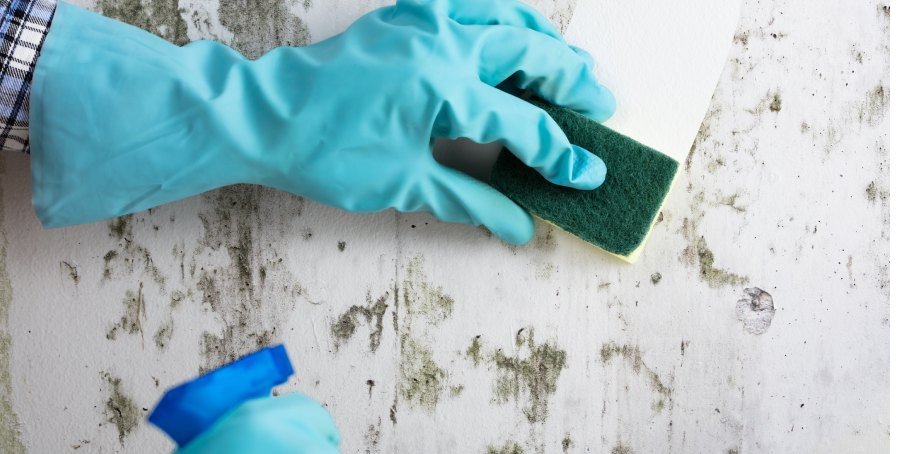
Dish Soap And Hot Water
Dish soap is great for removing stains. Follow these steps:
- Mix a few drops of dish soap in hot water.
- Pour the soapy water on the stain.
- Scrub the stain with a stiff brush.
- Rinse with clean water and let it dry.
Baking Soda Method
Baking soda is a powerful cleaner. Try this method:
- Sprinkle baking soda over the stain.
- Let it sit for 15 minutes.
- Scrub with a brush in a circular motion.
- Rinse with water and let it dry.
Vinegar Solution
Vinegar can also help. Here are the steps:
- Mix equal parts of vinegar and water.
- Pour the solution on the stain.
- Let it sit for 10 minutes.
- Scrub with a brush and rinse with water.
| Method | Materials Needed | Steps |
|---|---|---|
| Dish Soap and Hot Water | Dish soap, hot water, brush |
|
| Baking Soda Method | Baking soda, brush |
|
| Vinegar Solution | Vinegar, water, brush |
|
These home remedies are easy and effective. Try them to remove hydraulic fluid stains from concrete.
Commercial Cleaners
Removing hydraulic fluid from concrete can be challenging. Commercial cleaners offer an effective solution for this tough task. These cleaners are designed to break down oil and grease, making them ideal for removing hydraulic fluid stains.
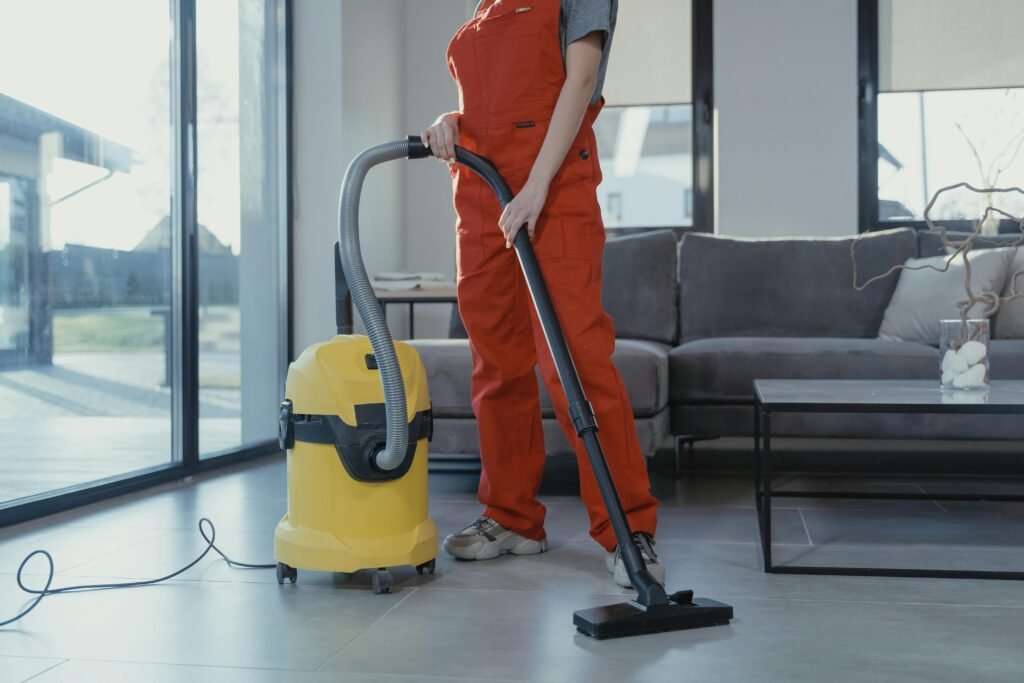
Choosing The Right Cleaner
Choosing the right commercial cleaner is essential for success. Look for products specifically designed for oil and grease removal. Check the label to ensure it’s safe for concrete surfaces. Popular brands like Simple Green, Oil Eater, and Zep offer reliable options.
| Brand | Features |
|---|---|
| Simple Green | Biodegradable, non-toxic, effective on oil stains |
| Oil Eater | Industrial strength, safe for concrete, removes heavy stains |
| Zep | Fast-acting, professional-grade, dissolves hydraulic fluid |
Application Techniques
Proper application techniques are crucial for removing hydraulic fluid. Follow these steps for best results:
- First, wear protective gloves and goggles.
- Next, sweep the area to remove debris.
- Then, apply the cleaner directly to the stain.
- Use a stiff brush to scrub the area thoroughly.
- Let the cleaner sit for 15-20 minutes.
- Finally, rinse the area with clean water.
Repeat these steps if the stain persists. For stubborn stains, consider using a pressure washer after applying the cleaner.
Using the right commercial cleaner and proper techniques ensures your concrete stays clean and stain-free.
Pressure Washing
Pressure washing is a powerful method to remove hydraulic fluid from concrete. It uses a high-pressure water spray to clean stubborn stains. This technique can save time and effort.
Equipment Needed
To effectively pressure wash concrete, you need the right equipment. Here’s a list of essential tools:
- Pressure Washer: Choose one with at least 3000 PSI.
- Detergent: Use a concrete cleaner detergent.
- Protective Gear: Wear gloves and goggles for safety.
- Scrub Brush: Useful for pre-scrubbing stubborn spots.
Effective Pressure Washing Techniques
Follow these steps to achieve the best results:
- Pre-treat the area: Apply detergent on the stained concrete.
- Let it sit: Allow the detergent to sit for 10-15 minutes.
- Use the pressure washer: Start washing from a distance of 1-2 feet.
- Move methodically: Use a sweeping motion for even cleaning.
- Inspect and repeat: Check for any leftover stains and rewash if needed.
Using the right technique ensures the hydraulic fluid is effectively removed. Pressure washing can restore the concrete to its original state.
Poultice For Stubborn Stains
Removing hydraulic fluid from concrete can be tricky. Especially if the stains are stubborn. One effective method is using a poultice. This technique draws out the stain from the concrete. Below, we explain how to create and apply a poultice for stubborn stains.
Creating The Poultice Mixture
To create the poultice mixture, you need a few materials. Gather the following items:
- Absorbent material (like kitty litter or sawdust)
- Hydraulic fluid cleaner or degreaser
- Plastic wrap
- Water
Mix the absorbent material with the cleaner. Aim for a thick paste-like consistency. If the mixture is too dry, add a bit of water. Ensure the mixture is not too runny.
Application And Removal Process
First, clean the stained area with water. This removes loose dirt and debris. Then, apply the poultice mixture generously over the stain.
Cover the poultice with plastic wrap. This keeps it moist and helps it work better. Allow the poultice to sit for 24 hours. During this time, the mixture will draw out the hydraulic fluid.
After 24 hours, remove the plastic wrap. Scrape off the dried poultice with a putty knife. Dispose of the used poultice properly.
Finally, rinse the area with water. Repeat the process if the stain remains. Sometimes, stubborn stains need multiple applications.
Preventive Measures
Taking preventive measures is crucial for keeping concrete surfaces clean. Preventing hydraulic fluid stains can save time and effort. Here are some effective steps to protect your concrete.
Sealing Concrete Surfaces
Sealing concrete surfaces is one of the best preventive measures. Sealants create a protective barrier. This barrier prevents hydraulic fluid from soaking into the concrete.
Use a high-quality concrete sealant for better protection. Apply the sealant according to the manufacturer’s instructions. Reapply the sealant regularly for continuous protection.
Here’s a simple guide to seal your concrete surfaces:
- Clean the concrete thoroughly.
- Allow it to dry completely.
- Apply the sealant using a roller or sprayer.
- Let the sealant dry as per the product instructions.
Routine Maintenance Tips
Regular maintenance keeps concrete surfaces clean and free from stains. Follow these simple tips:
- Sweep the concrete surface weekly to remove dirt and debris.
- Inspect for hydraulic fluid spills regularly.
- Use absorbent materials to clean spills immediately.
- Keep a spill kit handy for emergency clean-ups.
A clean concrete surface is less likely to absorb stains. Regular inspection helps detect and clean spills quickly.
Here is a routine maintenance checklist:
| Task | Frequency |
|---|---|
| Sweep the surface | Weekly |
| Inspect for spills | Daily |
| Clean spills immediately | As needed |
| Reapply sealant | Annually |
Following these preventive measures keeps your concrete surfaces clean and stain-free.
When To Call Professionals
Removing hydraulic fluid from concrete can be challenging. Some spills might need professional help. Knowing when to call experts is crucial. Professionals ensure effective removal and prevent damage to the concrete.
Assessing The Severity Of The Spill
First, check the size of the spill. Small spills are manageable at home. Large spills require expert intervention. Next, consider the duration of the spill. Fresh spills are easier to clean. Old spills penetrate deeper into the concrete.
Third, observe the stain’s appearance. Light stains might not need professional help. Dark, deep stains suggest more serious contamination. Lastly, check the location of the spill. Spills in critical areas, like driveways or garage floors, often need professional care.
Benefits Of Professional Services
Professionals use specialized equipment for effective cleaning. They have the right chemicals to break down hydraulic fluid. Experts ensure thorough cleaning, preventing future damage. Professionals also save you time and effort. They handle the task efficiently and safely.
Another benefit is their expertise. Professionals know how to treat different types of concrete. They can assess and address the specific needs of your spill. This ensures the longevity of your concrete surfaces.
| Factor | DIY | Professional |
|---|---|---|
| Spill Size | Small | Large |
| Stain Depth | Light | Deep |
| Tools Needed | Basic | Specialized |
| Effort | High | Low |
| Time Taken | Long | Short |
In summary, understanding when to call professionals is key. Assess the spill and consider professional benefits. This ensures clean and well-maintained concrete surfaces.
Environmental Considerations
Removing hydraulic fluid from concrete is not just a cleaning task. It has important environmental implications. Hydraulic fluid can harm soil, water, and plant life. This section will explore the environmental impact and provide eco-friendly cleanup methods.
Impact Of Hydraulic Fluid On The Environment
Hydraulic fluid spills can lead to serious environmental damage. Here are some key points to consider:
- Soil Contamination: Hydraulic fluid can seep into the soil. This can harm plants and animals.
- Water Pollution: Hydraulic fluid can reach water sources. This can kill fish and other aquatic life.
- Air Quality: Some hydraulic fluids release harmful vapors. These can affect air quality and human health.
Eco-friendly Cleanup Alternatives
Using eco-friendly methods to clean hydraulic fluid is crucial. Here are some alternatives:
- Biodegradable Absorbents: Use natural absorbents like sawdust or clay. These materials are safe for the environment.
- Eco-Friendly Cleaners: Choose cleaners that are biodegradable and non-toxic. These reduce harm to the environment.
- Proper Disposal: Collect and dispose of hydraulic fluid properly. Use designated disposal facilities to prevent contamination.
By following these eco-friendly methods, you can minimize environmental damage. Always opt for safer alternatives and protect our planet.
How Do You Remove Hydraulic Fluid Stains?
To remove hydraulic fluid stains from concrete, start by blotting the area with paper towels. Then, apply a degreasing agent and scrub with a stiff brush. Rinse thoroughly with water.
Can Baking Soda Remove Hydraulic Fluid?
Yes, baking soda can help remove hydraulic fluid. Sprinkle it generously over the stain, let it sit for 30 minutes, then scrub and rinse.
Does Kitty Litter Absorb Hydraulic Fluid?
Yes, kitty litter is effective at absorbing hydraulic fluid. Spread it over the spill, let it sit for a few hours, then sweep it up.
What Household Items Remove Hydraulic Fluid?
Common household items like baking soda, dish soap, and kitty litter can effectively remove hydraulic fluid from concrete surfaces.
Conclusion
Effectively to remove hydraulic fluid from concrete is crucial for maintaining a clean surface. Use appropriate cleaning agents and techniques for best results. Regular maintenance prevents stubborn stains and extends the life of your concrete. Follow these steps to ensure your concrete remains in top condition.
Your efforts will pay off with a pristine, stain-free surface.
